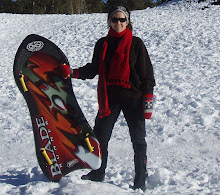Web 2.0 can be best explained as the progression or transformation, a second generation, from Web 1.0 to the new, modern era of the internet as a social network. Clearly it is not our parents’ internet anymore as this type of interactive, democratic and personal social network allows easy access and display of information for others to view, such as pictures, blogs and newgroups. It is a great symposium for direct personal commentary and mass corroboration among web users. The sources that helped me the most were O’Reilly’s article: What is Web 2.0? http://tinyurl.com/y3uhod and the YouTube video titled, “Understanding Web 2.0” which can be viewed at: http://tinyurl.com/3czuub .
O’reilly explains the various areas of the web, some we are already familiar with, that are part of Web 2.0. The more popular sites include Google, Yahoo, and Amazon which are known for information retrieval. He also includes additional less common sites some web users may have used but didn’t know they were part of Web 2.0; for example, Flickr and Del.icio.us. The growing popularity of social interaction on the web is why some areas of Web 2.0 are immensely popular such as MySpace, blogging and USENET.
Flickr and del.icio.us are examples of sites a user can seek specific information. These two sites, as others in Web 2.0, are known to categorize their information for the user via keywords (tags) to retrieve desired information. This practice is commonly called "Folksonomy" (O’Reilly, p 2). It became popular on the web for social applications, bookmarking and tagging photographs. Information is retrieved with ease and using these applications is relatively user friendly.
Blogging is probably the most popular of Web 2.0 era due directly to the advent of recent technology such as the permalink (O’Reilly, p 3). The permalink is what allows person to person direct discussion by just clicking the mouse. Before this, links wouldn’t last for an extended period of time and adequate information was quickly lost. Now conversations can be “archived and retraced” (O’Reilly, p 3, link for permalink). This is what helps create a social interaction between people; thus, internet users can discuss among one another (in the present), share commonalities, chat, make friendships etc.
I explored all the web tools provided to us and there are a several I liked: YouTube, Flickr and many eyes. I explored them all and decided to share using Flickr. Sharing memories using pictures is one of my favorite ways to use the web. Flickr provides an easy format to download, share, view and even copy photos. If you want to see some crazy ASU fans tailgating and enjoying the win over U of A last December, see them at: http://tinyurl.com/27lrrj .
References
O'Reilly, T. (Sept. 30, 2005). What is web 2.0: Design patterns and business models for the next generation of software. Retrieved February 26, 2008, from http://www.oreilly.com/pub/a/oreilly/tim/news/2005/09/30/what-is-web-20.html?page=1
Understanding web 2.0(March 8, 2006). . Retrieved February 27, 2008, from http://www.youtube.com/watch?v=nsa5ZTRJQ5w
Subscribe to:
Post Comments (Atom)

4 comments:
Hi Marcy,
Your blog was very informative about Web 2.0. I liked the You Tube Video. I thought that it explained Web 2.0 very clearly. You pictures are great! Very detailed.
I like how you explained Web 2.0 and how you showed your expertise by opening a flickr account and publishing pictures. Your photos were great! You did a good job organizing them around an ASU theme. Go Sun Devils!
Excellent job summarizing Web 2.0, and explaining the logical progression from Web 1.0. I feel as though just about any layperson could read your post and walk away better informed rather than simply confused. Also, I can see myself in the shot you have on Flickr of the goalposts at the Cal game! 'Twas a glorious moment for Sun Devil football.
Hi Marcy,
I like the beginning of your first paragraph, "Web 2.0...Clearly it is not our parents’ internet anymore as this type of interactive, democratic and personal social network allows easy access and display of information for others to view, such as pictures, blogs and newgroups." That is so true!
Also, your ASU picturs ROCK! Go ASU!!! Great job! :-)
Post a Comment